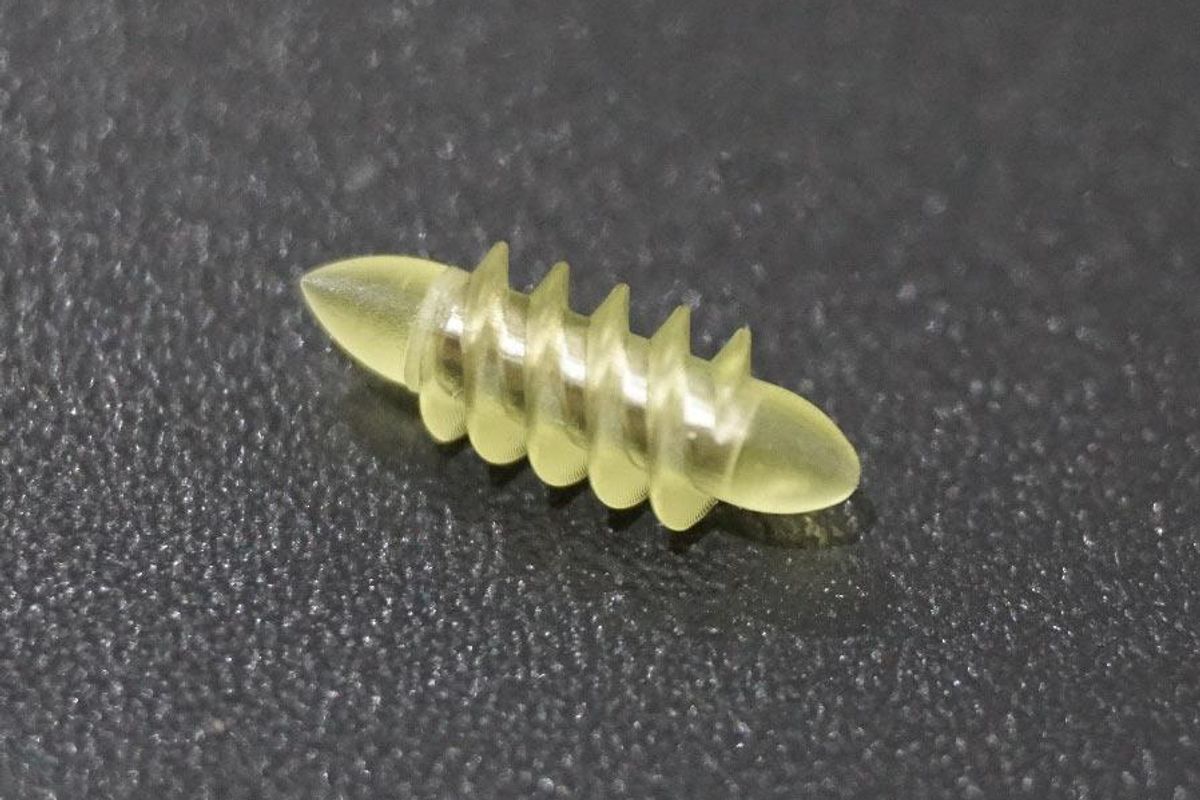Bionaut Labs Comes Out of Stealth To Reveal a Micro Robotic Treatment for Brain Tumors
Keerthi Vedantam is a bioscience reporter at dot.LA. She cut her teeth covering everything from cloud computing to 5G in San Francisco and Seattle. Before she covered tech, Keerthi reported on tribal lands and congressional policy in Washington, D.C. Connect with her on Twitter, Clubhouse (@keerthivedantam) or Signal at 408-470-0776.

A small group of scientists and engineers are developing a device smaller than a flea that will wind its way inside the heads of people with brain tumors and deliver life-saving treatments.
Bionaut Labs, a Los Angeles startup, unveiled on Wednesday the tiny rigid remote-controlled device with metallic parts, a silica polymer exterior and a cavity to place treatments inside. It's a sort of drone for the body.
"This is the revolution and this is where it starts," said physicist and co-founder Michael Shpigelmacher. "I have no doubt that 10 years forward, there will be not one, but there will be multiple companies in this universe of ... remote-controlled micro robots."
Bionaut Labs began preclinical trials in 2018 to treat brainstem glioma, a tumor nestled in one of the most complex and delicate areas of the body — the brainstem, which controls everything from breathing to eating to heart rate. Because of its location, surgery is often not an option and some patients undergo radiation therapy.
"You really want to hit up that tumor and you don't want to just flood the whole body with a payload that would have significant toxicity or side effects," Shpigelmacher said.
Their "micro robot" or "Bionaut," as the company calls it, is still untested in humans. But, the device is meant to be injected by doctors into the brain and controlled with a magnetic device that moves it through the brain and to the affected area. Once treatment is complete, it's removed magnetically. It's biggest advantage, the company hopes, is to deliver targeted treatment, eliminating the need for physicians to turn to more invasive medicines such as radiation.

Physicist Michael Shpigelmacher is the co-founder of Bionaut Labs
"This is mostly useful for anatomical targets that are hard to reach where you need that level of anatomical precision," Shpigelmacher said.
He and his co-founders Aviad Maizels and Alex Shpunt previously worked together at a startup called PrimeScience that was later acquired by Apple in 2013. He began working with pharma companies in 2007, watching drugmakers formulate and reformulate drugs when they failed clinical trials.
Part of the problem is that medicine, most often pills, taken by patients flow through the bloodstream and often have side effects from depression and weight gain to even more serious ones. If it works, the Bionaut would only release chemicals to specific areas and not diffuse through a patient's bloodstream. That method, known as localized treatment, means drugs could be stronger and more targeted.
"That would maximize efficacy at the site of action, and minimize toxicity in all the places where it shouldn't have any activity," said Dr. Eunjoo Pacifici, a professor at the USC School of Pharmacy, about localized treatments.
But the process isn't easy. Drugs are highly regulated by the Food and Drug Administration. It can take years before a drug comes to market. Localized treatments often require a device to inject that treatment into the body. That, too, can take years for the FDA to approve.
"It's a combination product. Sometimes you need to have different parts of the FDA review that product as well. It's like developing two products at the same time," Pacifici said.
Bionauts are focused on brainstem glioma for now, but Shpigelmacher's background at McKinsey has him thinking big — the implications of Bionauts, he said, could change the way drugs are developed.
Pacifici said the drug-making process is a "high-stakes game" because companies often have to pump thousands of dollars into researching, developing and testing drugs without the promise of a return on investment. But if the FDA does not accept the benefit/ risk profile of a certain drug, it cannot get to the next step and be marketed or sold.
"You hope the product will do what you want it to do and there's some promising results in the lab, there's some promising results in the animals and the early stage clinical trials seem very promising," Pacifici said. "But then when you actually throw down the big money to conduct a big trial, more often than not it fails. A product can fail at any stage, but when it fails at a pivotal stage, it's a huge loss for the company."
If treatments can be localized, Shpigelmacher said, the amount of time companies spend in the research and development phase could shorten, and drugs would be conceptualized and tested to be used with a Bionaut.
The company raised $20 million in backing from Khosla Ventures, Upfront Ventures and Bold Capital.
- Bionaut Moves Forward with Brain, Spinal Tumor Treatment - dot.LA ›
- Bionaut Labs Grabs $43M, Embodied Lands $19.2M - dot.LA ›
Keerthi Vedantam is a bioscience reporter at dot.LA. She cut her teeth covering everything from cloud computing to 5G in San Francisco and Seattle. Before she covered tech, Keerthi reported on tribal lands and congressional policy in Washington, D.C. Connect with her on Twitter, Clubhouse (@keerthivedantam) or Signal at 408-470-0776.



 Image Source: Perelel
Image Source: Perelel
 Image Source: Valar Atomics
Image Source: Valar Atomics Image Source: Waymo
Image Source: Waymo Image Source: Apple
Image Source: Apple